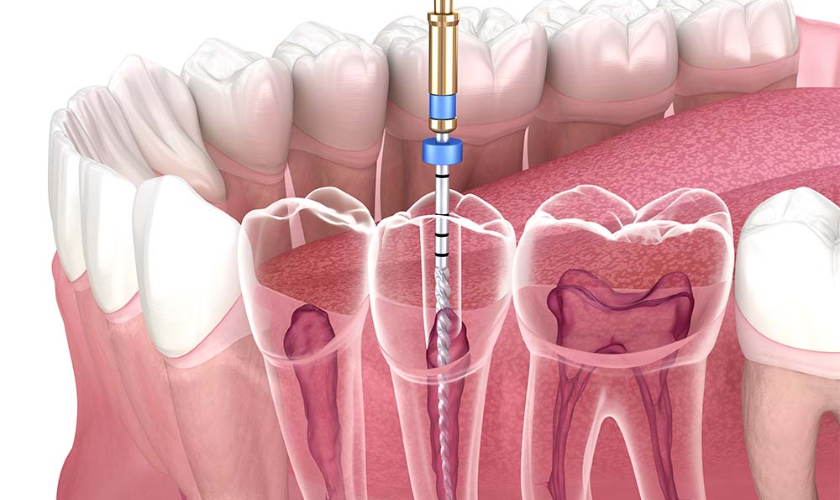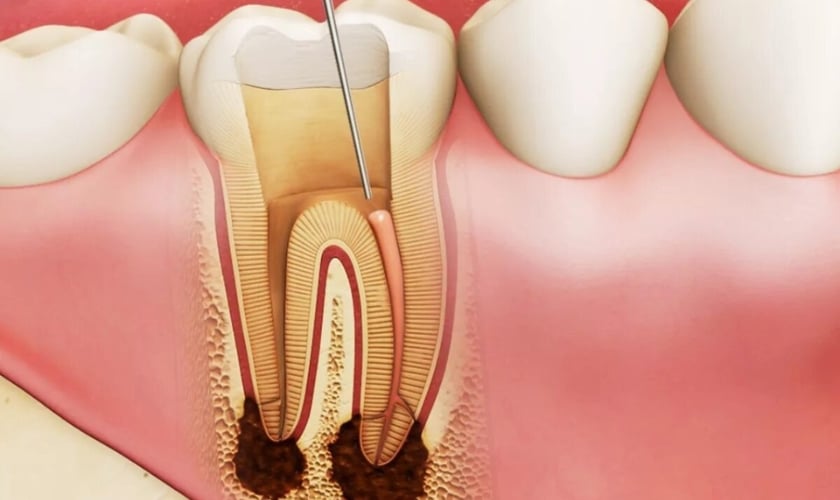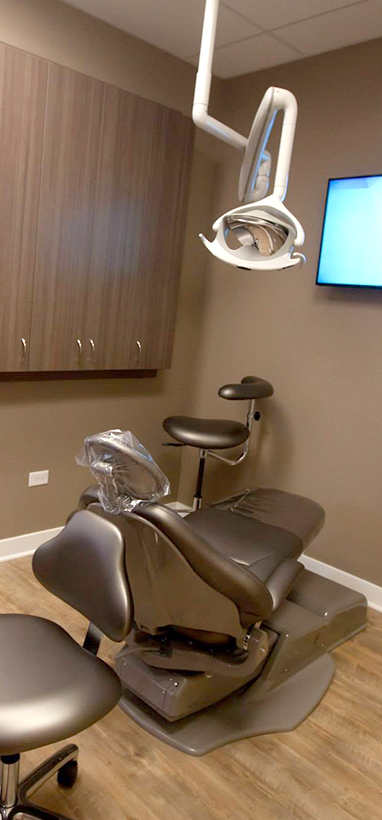1516 Legacy Cir, Naperville, IL 60563
Root Out the Pain: Is a Root Canal Right for You?

The mere mention of a “root canal” can send shivers down spines and conjure images of excruciating pain and dental nightmares. But fear not! The truth about root canals is far less terrifying than the rumors circulating. In fact, this often misunderstood procedure could be the hero your aching tooth desperately needs. Let’s face it: toothaches are no joke. They can throb, pulsate, and make even the simplest tasks like chewing or smiling feel like an ordeal. If you’re experiencing such pain, chances are your dentist might suggest a root canal. So, please take a deep breath and join us as we delve into the world of root canals.
Debunking the Myths: Separating Fact from Fiction
First things first, let’s clear the air on some common misconceptions surrounding root canals:
Myth: Root canals are incredibly painful.
Fact: Modern dentistry, with advanced aesthetics and techniques, ensures root canals are no more painful than a routine filling. Most patients experience minimal discomfort during and after the procedure.
Myth: Root canals weaken the tooth.
Fact: While the pulp (soft tissue inside the tooth) is removed, the tooth structure itself remains intact. In fact, a root canal strengthens the tooth by removing the source of infection and filling the canals with sealing material.
Myth: Root canals cause other health problems.
Fact: This myth has been thoroughly debunked by scientific research. There’s no evidence linking root canals to any other health issues.
Understanding the Procedure: A Step-by-Step Guide
Now that we’ve dispelled some myths let’s shed light on the actual root canal procedure:
- Consultation and Diagnosis: Your dentist Naperville will examine your tooth, take X-rays, and assess the extent of the damage to determine if a root canal is necessary.
- Numbing the Area: Local anesthesia ensures you feel minimal discomfort during the procedure.
- Accessing the Pulp: A small opening is made in the tooth to reach the infected pulp.
- Removing the Pulp: Infected pulp is carefully removed from the pulp chamber and root canals.
- Cleaning and Disinfection: The canals are meticulously cleaned and disinfected to eliminate any remaining bacteria.
- Filling the Canals: The empty canals are filled with a special material to prevent future infection and seal the tooth.
- Temporary Filling: A temporary filling is placed on the tooth until a permanent crown or restoration is prepared.
- Follow-Up Appointment: You’ll likely need a follow-up appointment to receive your permanent crown or restoration, ensuring the tooth’s strength and functionality.
Is a Root Canal Right for You? Weighing the Options with Insight
Tooth pain can bring a dark cloud over your day, making even simple tasks like eating or smiling a challenge. If your dentist suggests a root canal, it’s natural to have questions and concerns. While the procedure may seem daunting, understanding the pros and cons in light of your specific situation can empower you to make an informed decision about your oral health.
When is a Root Canal the Hero?
A root canal becomes your dental champion in several scenarios:
Persistent Pain
If you have a throbbing, nagging toothache that worsens with chewing, hot/cold, or pressure, it might indicate infected pulp. A root canal removes the infection, alleviating pain and preventing further damage.
Swelling and Discoloration
Notice a pimple on your gums or a change in your tooth’s color (darkening or graying)? These are signs of infection that a root canal can address, preserving the tooth and restoring its natural appearance.
Previous Fillings or Crowns
Deep fillings or extensive restorations can weaken the tooth, making it susceptible to infection. A root canal can strengthen the tooth and prevent further complications.
Overall Oral Health
Saving a natural tooth is crucial for maintaining a healthy bite and preventing jaw problems. When feasible, a root canal is often preferred over extraction to preserve your natural smile structure.
Beyond the Basics: Digging Deeper
Your unique situation deserves a nuanced understanding. Here are some additional factors to consider:
- Severity of Infection: The extent of the infection and the number of affected roots influence the complexity and cost of the procedure.
- Alternatives: Discuss alternative options like extraction and replacement with your dentist. Weigh the long-term implications of each approach in terms of cost, functionality, and aesthetics.
- Dental Anxiety: If you have dental anxiety, communicate openly with your dentist. They can offer sedation options and techniques to create a comfortable experience.
- Overall Health: Certain medical conditions might require additional precautions during a root canal. Inform your dental consultant about any relevant medical history.
Remember, a root canal is not a villain to be feared but a potential hero ready to rescue your smile from pain and infection. By understanding the facts, embracing modern dentistry, and working collaboratively with your dentist, you can make an informed decision that promotes your long-term oral health and well-being. So, ditch the myths, embrace the truth, and let a root canal become the hero your smile deserves!










